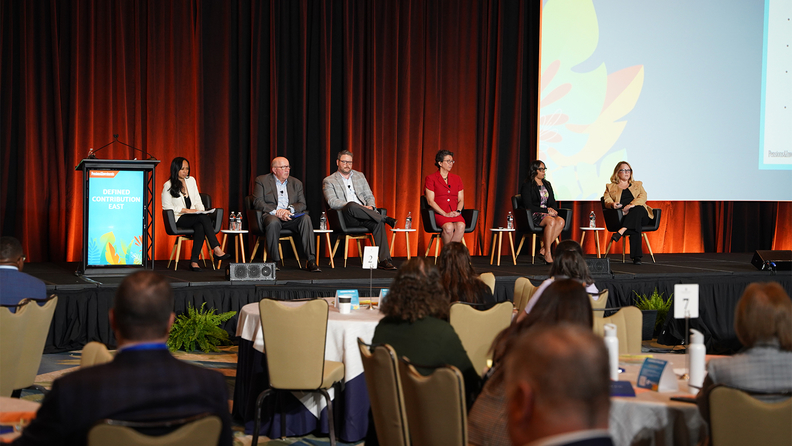Questions around the nearly 100 provisions in the SECURE 2.0 Act and whether and which ones to implement in retirement plans dominated discussions at Pensions & Investments' Defined Contribution East conference held March 12 – 14 in Orlando.
During panel discussions and networking breaks, plan sponsors debated the merits and complexities of implementing voluntary measures such as emergency savings accounts and employer matching contributions for student loan debt payments.
Many puzzled through questions not addressed in the legislation and for which they would like additional guidance from the Department of Labor.
A big question for many plan sponsors is how to prevent abuses in emergency savings accounts linked to retirement plans, said Holly Verdeyen, a partner and U.S. defined contribution leader at Mercer, during a well-attended panel called "Accomplishing So Much in So Little Time — Meeting the New SECURE 2.0 Provision Deadlines."
Plan sponsors want to know how to "prevent things like participants contributing to their accounts and getting the match and then immediately withdrawing their contribution," she said.
Another big question for many plan sponsors revolves around the optional provision of allowing employees to designate employer matching contributions on a Roth basis.
"There is so much additional clarification that is needed on how those employer matching contributions are going to be treated for the purposes of payroll, withholding and income taxation," Ms. Verdeyen said.
"This is one of the few provisions that is actually implementable today, but I think employers would take on a lot of risk implementing that provision without that additional clarification that really needs to come from the IRS," she said.
Even as plan sponsors and their service providers tried to dissect the legislation and scratched their heads about how best to move forward, some were already thinking ahead to SECURE 3.0.
Shlomo Benartzi, professor emeritus at UCLA Anderson School of Management and founder and CEO of PensionPlus, a digital retirement income service provider, looked at how to boost financial wellness in a way that he felt "really moves the needle."
"That's not to say that SECURE 2.0 is not a great improvement, but I think there's a lot more we can do," he said during a keynote speech on "SECURE 3.0 and Behavioral Economics — Making the Best Nudge Even Better."
Mr. Benartzi suggested that the auto-enrollment and auto-escalation requirements for all new plans under SECURE 2.0 be more aggressive. SECURE 2.0 requires employers offering new 401(k) and 403(b) plans to auto-enroll participants at an initial deferral rate of 3% and then auto-escalate them by 1% annually.
"We need to start at higher rates, we need to escalate sooner and faster," Mr. Benartzi said.
Mr. Benartzi also pushed the industry to use data to personalize the default auto-enrollment and auto-escalation rates in defined contribution plans.
"How many of you believe that a single mom with three kids and five maxed out credit cards should be auto-enrolled at 7%?" he challenged the audience during his keynote speech.
Mr. Benartzi pointed out that auto-enrolling everyone at the same rate without considering their debt is misguided.
"I think we have to start looking at data. We have to start using it. We have to start personalizing it," he said.







